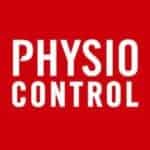
Shoreham Airshow Crash
BASICS SIMCAS (South East Coast Immediate Care Scheme) volunteer immediate care nurse Tony Kemp was called yesterday to attend the Shoreham Airshow Crash involving a Hawker Hunter Jet. Based at the Airshow assisting the British Red Cross in their crowd medical cover Tony witnessed the immediate aftermath of the crash as the jet crashed onto the A27 dual carriageway just outside the airfield.
Asked to attend the scene Tony was joined by two off duty GPs (Drs Marieanne Jackson and Karen Eastman) who had undertaken BASICS training and whose assistance was invaluable in the coming hours. As reported nationally a number of motorists and other road users died at the scene whilst the pilot escaped with his life although remaining critically ill in the Royal Sussex County Hospital. Tony was the first medical resource on scene and was quickly joined by the SECAmb airside ambulance for the airshow.
It was immediately obvious that there were a number of deceased casualties and reports of walking wounded being taken to an ex-pub, now part of the nearby Lancing College that lies adjacent to the A27. Tony split his medical response equipment and Dr Jackson was initially tasked to the ex-pub to provide medical care and assessment. Tony and Dr Eastman took the bulk of the kit to the site of the cockpit in the rough ground just off the road bordering the runway to the airfield where there were reports from fire-fighters on scene that the pilot was alive.
Working in cooperation with fire-fighters and about 10-meters from the engines which remained on fire the pilot received immediate life-saving care whilst arriving ambulance crews brought a long board stretcher down to the site so that the pilot could be rapidly extricated to a place of greater safety for all concerned and his care handed over to an air ambulance (HEMS) team. Tony and the two doctors, working with other rescuers and in liasion with the the Medical Incident Commander from the Kent Air Ambulance provided care to the walking wounded who were at the ex-pub site and at the main Red Cross treatment centre on the airfield. They were joined by a medical team from the Fire and Rescue Service who brought additional equipment. Four others were transferred to hospital as a direct result of the crash.
Tony and the GPs were reunited at the Airfield in the British Red Cross treatment Centre where sterling work was being done by Red Cross Volunteers caring for not only those physically and emotionally affected by the crash but also a range of non-related injuries and illnesses arising (as normal) within the crowd of 20,000. The Main Treatment Centre had been declared a secondary treatment centre for casualties arising from the crash. Two other Red Cross treatment centres within the venue also cared for a number of others who presented with minor illness and injury as well as upset by the afternoon’s events.
Tony said afterwards: “My medical colleagues and I were so impressed with the resilience and professionalism of the Red Cross volunteers as well as the generosity and assistance offered by those at the ex-pub (Lancing College Building). This was a horrific incident and many people witnessed what was a quite disturbing sight and a much lesser number were more immediately involved in the aftermath at the crash sight.” As the afternoon wore on the public remained unable to leave the airfield until about 7pm and even then faced lengthy queues to get out as well as further delays on local roads. During this period a number of individuals came to the Red Cross treatment centre worried about the consequences of missing important medication due to being delayed in getting home and received advice from Tony.
A small number of bystanders roamed the crash site in the initial aftermath filming with their mobile-phones. Tony commented “many found this behaviour quite grotesque and outrageous, unfortunately it is a modern curse at the scene of many accidents today, I would ask that individuals who have such photos and videos consider very carefully the ramifications of sharing these images with anyone, particularly on social media.”
Another SIMCAS member and Emergency Medicine Consultant, Dr Rowley Cottingham was the major incident commader at the Royal Sussex County Hospital in Brighton. He said that he was “enormously proud of the Emergency department staff and the prehospital response”.
BASICS SIMCAS offer their condolences to all those affected by yesterday’s tragedy and their thanks to emergency services colleagues including those of the British Red Cross and the volunteer doctors who came forward to assist.
Drs Marianne Jackson and Karen Eastman are both Sussex based GP’s who were attending the Airshow with their families. Tony Kemp is a Nurse Consultant in Emergency Prehospital Care based in Kent. Tony is also the Vice-Chairman of the British Association for Immediate Care and a tutor on it’s prehospital care courses..
Like this:
Like Loading...



 James Risley is a technology writer living in Seattle. He’s written for the Medill News Service and helped build small, news-focused web tools for covering transportation and politics. He recently earned his graduate degree from the Medill School of Journalism at Northwestern University. You can follow James on Twitter or Instagram and reach him at james@geekwire.com.
James Risley is a technology writer living in Seattle. He’s written for the Medill News Service and helped build small, news-focused web tools for covering transportation and politics. He recently earned his graduate degree from the Medill School of Journalism at Northwestern University. You can follow James on Twitter or Instagram and reach him at james@geekwire.com.






You must be logged in to post a comment.